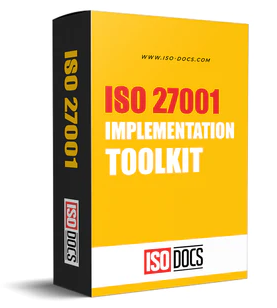How To Do Risk Assessment ISO 27001
Risk assessment is a pivotal process within the ISO 27001 framework, serving as the cornerstone of an effective Information Security Management System (ISMS). It empowers organizations to systematically identify, analyze, and mitigate potential risks to their sensitive information. This guide will delve into the intricacies of conducting a thorough risk assessment in alignment with ISO 27001 requirements.

Understanding the Significance of Risk Assessment
In a landscape where technology is the driving force behind progress, the intricacies of information security have taken centre stage. Regardless of size or industry, organisations are entrusted with a wealth of sensitive data, from proprietary business information to customer credentials. In this era of rapid technological advancements and escalating cyber threats, the importance of understanding and managing risks to information security cannot be overstated.
The digital frontier offers unprecedented opportunities for innovation and growth but presents an array of unseen challenges. As organizations increasingly rely on interconnected systems, cloud services, and mobile technologies, they expose themselves to a broader spectrum of threats than ever before. The complexity and scale of potential risks have ushered in an era where effective risk assessment becomes a compass for navigating these uncharted territories.
ISO 27001, a globally recognized standard for information security management, stands as a bulwark against the tide of cyber threats. This standard acknowledges the criticality of risk assessment as an integral pillar of its overarching framework. By weaving risk assessment into its fabric, ISO 27001 compels organizations to meticulously examine potential vulnerabilities and threats, ensuring a proactive stance against security breaches and operational disruptions.
Key Steps in Conducting a Risk Assessment
- Establish the Context: Begin by defining the scope of your risk assessment. Identify the assets, systems, processes, and stakeholders relevant to your ISMS. This provides the foundation for a targeted and effective assessment.
- Identify Assets: Catalogue all the assets within your scope, tangible (hardware) and intangible (information databases and intellectual property). Understanding what needs protection is essential for accurate risk evaluation.
- Identify Threats and Vulnerabilities: Threats encompass potential events that could compromise your information security, while vulnerabilities are weaknesses that threats could exploit. Document these comprehensively to gain a clear picture of potential risks.
- Assess Risks: Determine the likelihood and potential impact of each risk. This evaluation helps prioritize risks for mitigation efforts. Use a risk assessment matrix to assign risk levels based on the severity of impact and likelihood.
- Evaluate Existing Controls: Identify any existing security controls that mitigate the identified risks. Assess their effectiveness and determine if additional measures are needed.
- Calculate Residual Risks: Residual risks are the risks that remain after existing controls have been considered. Assess the residual risks to ascertain whether they are acceptable or require further mitigation.
- Prioritize Risks: Rank risks based on their severity, potential impact, and likelihood. This hierarchy assists in allocating resources effectively and addressing high-priority risks first.
- Develop Risk Treatment Plans: For high-priority risks, create detailed risk treatment plans. Define specific actions, responsibilities, timelines, and resources required to mitigate these risks. These plans may involve implementing new controls, enhancing existing ones, or transferring or accepting the risk.
- Monitor and Review: Regularly review and update the risk assessment as the organizational landscape evolves. New threats and vulnerabilities emerge over time, requiring a dynamic and responsive approach to risk management.
- Beyond Protection: Fostering Resilience and Sustainability
While shielding organizations from harm is a paramount objective of risk assessment, ISO 27001 extends its reach to encompass a broader vision. The standard underscores the significance of preserving the integrity of sensitive information and ensuring the sustainability and resilience of an organization's operations.
Picture an organization as a sturdy vessel navigating treacherous waters. A well-executed risk assessment serves as a skilled captain, steering the ship away from hidden icebergs and turbulent currents. By identifying potential pitfalls, an organization can make informed decisions, allocate resources strategically, and lay a solid foundation for long-term growth.
This emphasis on resilience extends beyond immediate threats. Organizations that integrate risk assessment into their DNA are better equipped to weather storms, adapt to changing landscapes, and emerge stronger from crises. They cultivate an ability to absorb shocks, respond effectively to incidents, and swiftly recover from disruptions, safeguarding their assets, reputation, and future prospects.

Tips for a Successful Risk Assessment
- Collaboration: Engage a cross-functional team with diverse expertise to ensure comprehensive risk identification and analysis.
- Data Collection: Gather relevant data from reliable sources, such as incident reports, threat intelligence, and vulnerability assessments.
- Realism: Ensure risk assessments are grounded in reality and avoid overestimating or underestimating risks.
- Continuous Improvement: Leverage lessons learned from incidents and near-misses to continually refine your risk assessment process.
- Quantitative and Qualitative Analysis: Combine quantitative (measurable) and qualitative (subjective) factors for a well-rounded assessment.
Conclusion
Conducting a meticulous risk assessment by ISO 27001 principles is an indispensable step in establishing a resilient information security management system. By systematically identifying, analyzing, and mitigating potential risks, organizations can fortify their defences, protect sensitive data, and confidently navigate the ever-evolving landscape of information security threats. In an age where the digital realm is rife with vulnerabilities, mastering risk assessment becomes a strategic imperative, ensuring that organizations survive and thrive in the face of adversity.


